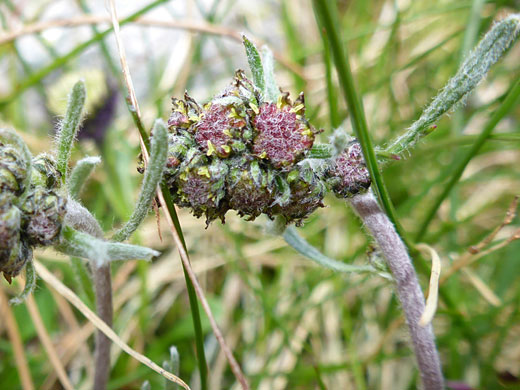Common name:
Alpine sagebrush
Family:
Scientific name:
Artemisia scopulorum
Main flower color:
Range:
The Rocky Mountain states (not Idaho)
Height:
Up to 10 inches
Habitat:
Meadows and rocky areas, between 10,000 and 14,000 feet
Leaves:
Up to 2.5 inches long, stalked, pinnately divided into linear or narrowly oblanceolate lobes
Season:
July to August
As its common name (Alpine sagebrush) suggests, artemisia scopulorum is a high elevation species, not found below 10,000 feet, inhabiting exposed areas above the treeline, where it can be locally widespread. Plants are small, no more than 10 inches tall, and have leaves mostly at the base; they are twice divided into short, narrow lobes. The smaller stem leaves may be entire. Both sides of the leaves are covered by short, silky hairs.
Flowerheads form in mid to late summer in a cluster at the top of the stem, often all angled to one side, and either horizontal or drooping. The involucre is about 0.2 inches in diameter, lined by broad green phyllaries which have relatively wide, dark brown or black margins, and a covering of shaggy hairs. Florets either produce only pistils (numbering 6 to 14), or both stamens and pistils (15 to 30). The corollas become purplish as they mature.
Flowerheads form in mid to late summer in a cluster at the top of the stem, often all angled to one side, and either horizontal or drooping. The involucre is about 0.2 inches in diameter, lined by broad green phyllaries which have relatively wide, dark brown or black margins, and a covering of shaggy hairs. Florets either produce only pistils (numbering 6 to 14), or both stamens and pistils (15 to 30). The corollas become purplish as they mature.
All Contents © Copyright The American Southwest | Comments and Questions | Contribute | Site Map




